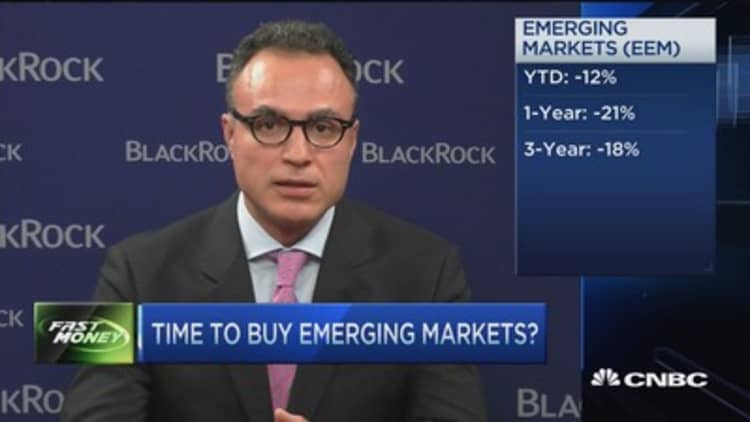Emerging markets are closing in on their worst quarter since the global financial crisis.
Investors yanked out $40 billion from emerging markets in the three months through September, according to estimates from the Institute of International Finance (IIF). That represents the worst quarter since the final three months of 2008.
Countries from Mexico and Malaysia have been buffeted in recent months as investors take fright at the prospect of higher interest rates in the US, which dims the appeal of riskier emerging market assets.
Higher capital outflows in many countries have exerted pressure on local currencies, exacerbating worries for some investors who are now nursing losses on both the underlying asset and the local currency.
Signs of economic slowdown in China, which appears to be cooling after years of frenetic growth, haven't helped either.

Here are some charts from the IIF that highlight the extent of the sell-off.
Outflows were nearly evenly distributed between equities and bonds, with investors pulling out $21 billion from debt markets and $19 billion from equities.
Dovish signals from the Fed after its September policy meeting gave a temporary boost to portfolio flows, the IIF said. While this turnaround has cushioned the outflows in September, it was a short-lived rebound.
Equity and debt flows to the seven countries in IIF's sample that publish daily portfolio flows data have been negative in September.
As far as monthly cumulative flows are concerned, Hungary and Thailand have had a particularly torrid time. Bulgaria on the other hand, seems to have done alright.
The market tumble also looks to have dented debt and equity issuance by emerging market countries and companies.
Read MoreIt's carnage out there for emerging markets
Subdued issuance resulted in smaller than usual positive contributions to IIF's estimates for equity and bond flows.
The IIF data is complementary to data published by EPFR, another financial information provider, but there are some differences.
The IIF Tracker estimates total non-resident portfolio inflows to emerging markets, following standard balance-of-payments conventions, while EPFR measures flows in and out of mutual funds and exchange traded funds. As both estimates are sample-based, there could be some discrepancy based on sampling errors.
Still, EPFR data also point to a sharp decline in flows to funds dedicated to emerging markets.

